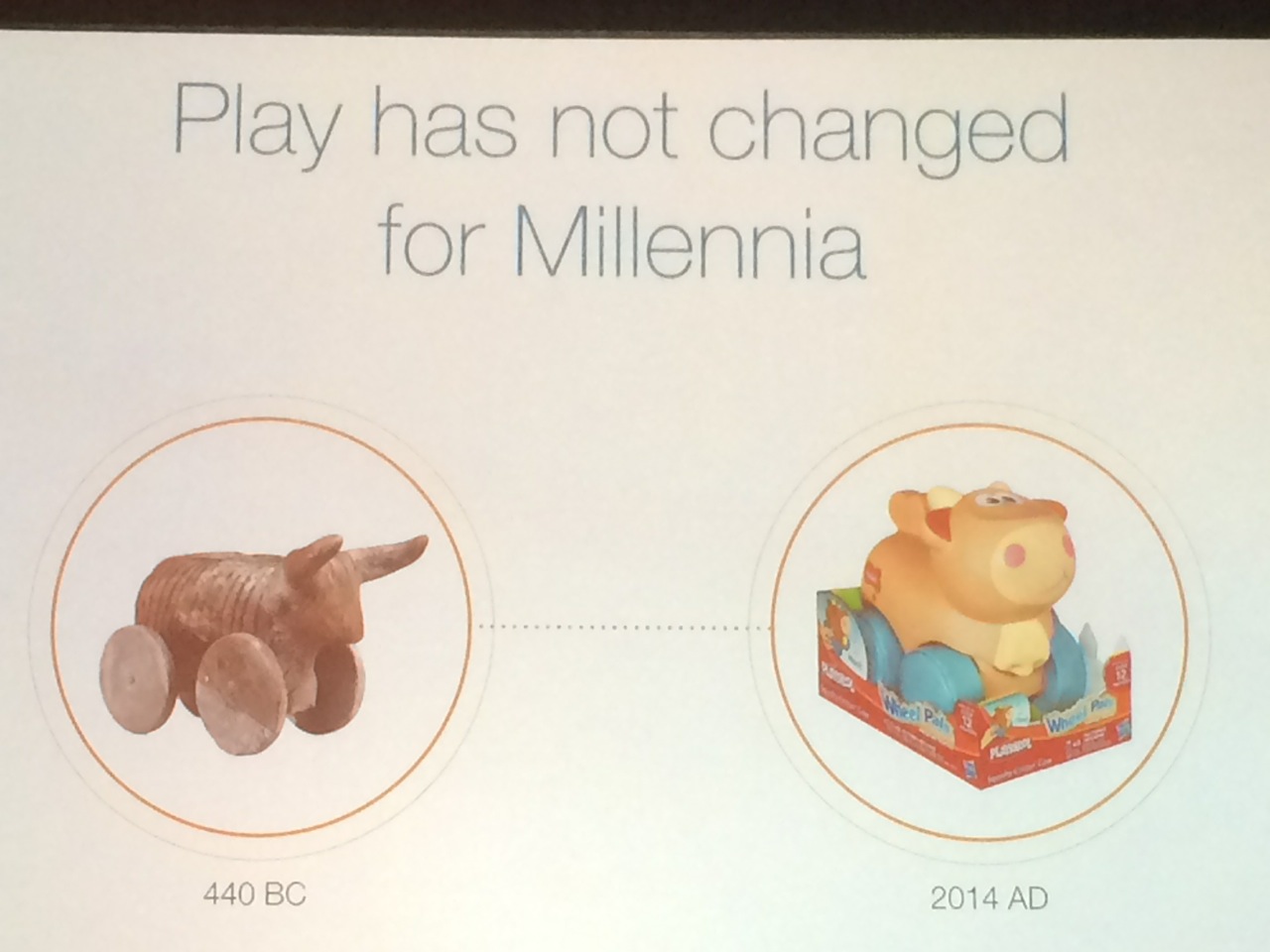Usually, this blog is written for Kidscreen’s industry readers, explaining or introducing something from the world of academic research. With the 2014 Kidscreen Summit wrapping up today with iKids, it seems like a good week to address those working at the other end of the bridge we’re building.
I went into the Kidscreen Summit with eyes open to ideas, trends and insights that might spark opportunities or discussion among researchers. Three sessions in particular yielded nuggets – the opening keynote, a research presentation on play, and a panel on the future of kids media. Various elements may appeal to different academic disciplines and interest areas. They may inspire qualitative or quantitative lines of inquiry; suggest psychology, child development or communications research; and tap interests of those who study all ages from baby to teen.
I’d love it if readers reacted to any of these themes, in the comments below!
Keynote speaker, anthropologist Grant McCracken, said “TV [not children’s specifically] is now sweeter, grimmer, funnier, ‘cringier’, more irreverent, stranger, sportier, more autistic, and more supernatural.” He used this growing complexity (a la Steven Johnson) to argue, “mass media content is better than ever before.”
But I ask, my communications content analyst colleagues: is today’s content better, or is there simply more? If you imagine a bell curve with crap to the left, exceptional content to the right, and the great snake-belly of meh in the middle, has the entire curve risen or only the right end?
For those who investigate diversity of roles and portrayals in media, McCracken also noted the growing number of characters who appear to fall somewhere on the Autism Spectrum. He asked who could have imagined that we’d create leading characters who have difficulty making sense of, and interacting socially with, the world around them. But, isn’t the “fish out of water” one of the oldest tropes in storytelling?
One final McCracken statement: “there is no more popular culture; there’s just culture.” Discuss.
The speaker addressing play and the influence of digital toys, games and media noted a recent Canadian survey finding that roughly four times as many kids 3-5 could play a computer game as could tie their own shoe. This is just the kind of statistic designed to shock parents until – for those who like to dig into potential study biases – your realized that this one was underwritten by an internet security software company.
That same speaker raised an issue that is perpetually debated among play researchers: do new technologies change classic play patterns, or do the foundations remain constant but their context is altered? Again, discuss.
So much of Kidscreen 2014 revolved around the mind-boggling amount of kids media content out there right now – TV, web, games, apps. What’s not clear yet – and could be the basis of studies that would span industry and academic interests – is whether kids being “spoiled for choice” will actually lead to wider content creation and consumption. With additional “shelf space,” will the envelope of what we offer children expand (and will children choose it?) or simply add more of what’s worked?
On this topic, 9 Story Entertainment’s Vince Commisso gave the most interesting presentation, on the trend toward data-driven content commissioning. Commisso praised the degree of granularity with which broadcasters and broadband distributors can analyze their audiences, but cautioned not to let the tail wag the dog: TV is an art more than a science, and data alone might have killed some of TV’s most loved series at the pilot stage.
With all these available numbers, I had to wonder if universities could make a compelling argument for confidential access to the raw data, whether for deeper academic insight into how we use media today, particularly in under-served communities; or to use academia’s expertise in reading data to help the industry shape its decision-making.
At the same session, British developer Marc Goodchild demonstrated a dynamic second-screen app technology that can feed interactive data synced to the program, even during time-shifted viewing. In this case, the game show on TV was cuing questions on the tablet for the child at home to answer.
As much as I enjoyed this demonstration for home entertainment, it also left me wondering how it might revolutionize research into program comprehension and engagement.
Finally, the “futures” panel asked a truly compelling question, that can spark endless debate, equally among those who study and those who make children’s media: who’s in control? It’s popular in media to say “content is king” – and indeed, content creation and distribution have become highly democratized. On the other hand, all that content is meaningless if it goes unwatched, and today’s viewer can access any content, anywhere, any time. So, who rules – the producer or the consumer? Discuss.





















